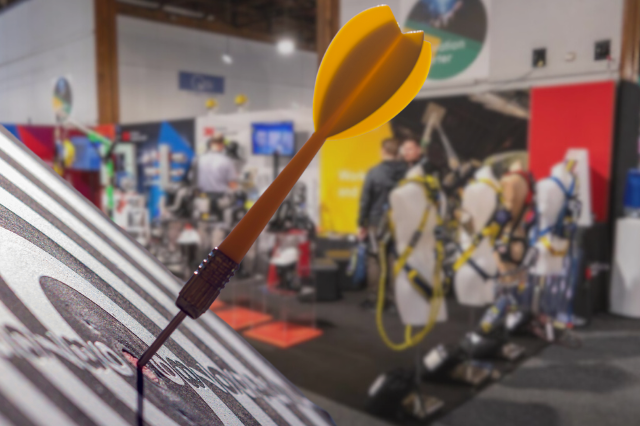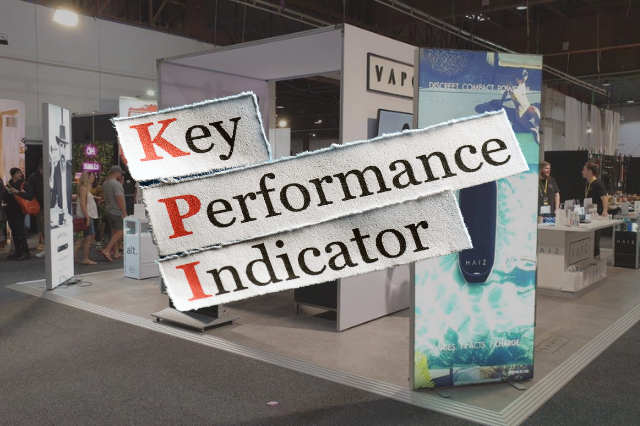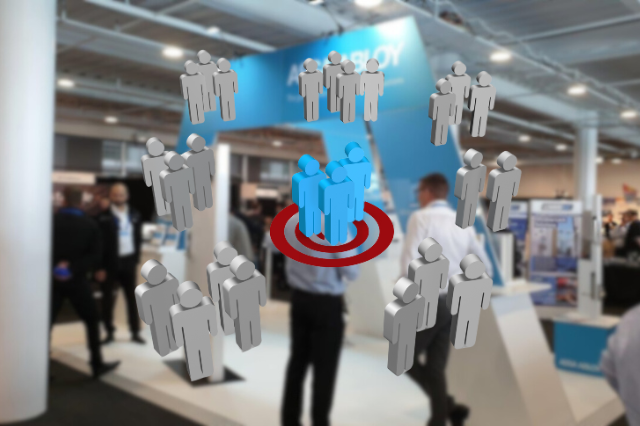How to write a Winning Exhibition Stand Brief
How to write a Winning Exhibition Stand Brief
Crafting an effective exhibition stand brief is a key to laying the groundwork for success in showcasing your brand, products, or services. It's the strategic blueprint that defines your approach, sets the tone, and ultimately determines the impact of your exhibition stand.
At Displays 2 Go, our team has been delivering exceptional stands for more than 15 years, building and installing exhibition stands across the country. We're here to help you express your ideas well and make sure your display helps fulfill your objectives.
To help you plan the best stand possible, we've put together our top 9 tips for creating an ideal plan for your next exhibition. These tips are simple and will guide you in making a brief that works smoothly for your upcoming appearance at the exhibition.
What is an exhibition stand brief, and why is it important in the event planning process?
An exhibition stand brief is a comprehensive document that outlines the objectives, requirements, and specifications for designing and constructing an exhibition stand. Typically developed by the exhibitor or their marketing team, this brief serves as a foundational guide for the entire design process. It encapsulates critical details such as the exhibitor's goals, target audience, key messages, brand identity, and the desired theme for the stand.
The significance of the exhibition stand brief lies in its ability to provide a clear vision for all stakeholders involved in the event. It serves as a communication tool that bridges the gap between the exhibitor's strategic objectives and the creative execution of the stand design. By clearly defining expectations and parameters, the brief helps streamline decision-making and ensures the resulting exhibition stand aligns seamlessly with the exhibitor's brand and messaging.
If you need assistance in this process, Displays 2 Go is ready to guide you by providing expertise in optimising your exhibition stand design for maximum impact.
Now that you know more about exhibition stand briefs, let's jump into the main parts. We'll look at the top 9 tips to include when creating a successful exhibition stand brief.
#1 - Define your goals and objectives
Having a clear goal is like having a map for your journey, and the same goes for crafting a winning exhibition stand. Clearly define the purpose of your exhibition presence. Whether it's lead generation, sales on-the-day, or just brand awareness, your objectives should be specific, measurable, achievable, relevant, and time-bound (SMART).
Think of your objective as a target you set for success. It helps you measure how well your stand performs. If you want more people to know about your brand, having a clear goal lets you track if your exhibition stand attracts attention and creates brand recall. In simple terms, a clear objective isn't just a plan; it's a way to make sure your exhibition stand isn't just nice to look at but also works hard to achieve the goals you've set for your brand.
Here are some crucial factors when defining your goals and objectives for your exhibition stand.
- What are the main objectives you aim to achieve with your presence at the event? Why are you there?
- How do you envision engaging with the audience within the exhibition space? Standing up or sitting down? Brief conversations to be followed up later, or more details discussions? Are there specific interactive elements or experiences you'd like to incorporate?
- What is your budget for the exhibition stand design and construction, as well as for ancillary costs such as accommodation, travel and meals?
- What is the timeline for the project, including key milestones and deadlines?
- Are there any specific logistical considerations, such as dimensions, location, or utility requirements that the exhibition design team should be aware of?
- Are there specific technologies or digital elements you'd like to incorporate into the stand design to assist achieving your objectives?
- Do you have any specific sustainability goals or considerations that should be integrated into the design?

#2 - Craft a compelling call to action
Adding a call to action (CTA) to your exhibition stand is like giving visitors a roadmap; it tells them exactly what to do next. Think of it as a friendly invitation or a clear signpost guiding them towards taking action. Without a CTA, visitors might love what they see but not know what step to take next, missing out on potential connections or opportunities.
The message included in your CTA should be concise, inviting, and easy to understand. It should clearly communicate the value proposition and benefits of taking the desired action.
For example, if your goal is to generate leads, a simple and effective CTA could be: "Sign up for exclusive updates and offers!" or if your goal is to sell and showcase a new product, your CTA might invite visitors to experience a live demo or pre-order the product. If you're selling off the stand the CTA may be to speak to your team about the special offers available at the show.
Here are some examples:
Visit our booth now to unlock exclusive discounts and special offers available only during this event. Don't miss out on saving big!
Try before you buy, and experience the quality first-hand. Stop by for a live product demonstration and get a feel for our goods. You might just discover your new favourite!
Purchase our specially curated bundles available exclusively at this trade show. Save more when you buy the perfect combination of our best-selling products.
Join our VIP list for early access to new arrivals, special promotions, and insider updates. Sign up at our booth and stay ahead in style.
Crafting a CTA for your exhibition stand isn't tricky; it's about being creative and straightforward. Remember, your CTA should align with your goals, delivering the message you want to achieve. Keep it simple: design your CTA to guide visitors toward actions that help you reach your specific event objectives.
#3 - Know exactly what success looks like
Define key performance indicators (KPIs) that align with your exhibition objectives. Whether it's lead generation, sales revenue, or social media engagement, establish metrics for success. Outline how these metrics will be tracked and analyzed post-event to gauge the overall effectiveness.
Here are thoughts on how to integrate measurement into the process:
Identifying Relevant KPIs: Define KPIs that directly align with the stated objectives. If the goal is to enhance brand visibility, then metrics such as booth traffic and social media engagement become crucial. For lead generation or sales-focused objectives, metrics like qualified leads and sales conversions are essential. Each KPI should serve as a tangible measure of progress toward meeting the exhibition's goals.
Real-Time Monitoring: Incorporate plans for real-time monitoring during the event. Utilise technology and tools to track metrics such as booth traffic and social media engagement. This allows for immediate adjustments and optimisations to enhance the overall impact of the exhibition stand.
Sales Conversions as a Key Metric: If the exhibition's primary objective is to drive sales, ensure that sales conversions are a focal point in the KPIs. Track the number of leads that translate into actual sales, providing a direct correlation between the exhibition stand's performance and its impact on the bottom line.

Data Collection and Analysis: The brief should outline a comprehensive data collection plan. Specify how lead generation data will be collected, how booth traffic will be monitored, and how social media engagement will be tracked. Post-event analysis should be equally detailed, allowing for a thorough examination of the collected data to derive meaningful insights.
Post-Event Insights for Improvement: Emphasize the importance of post-event analysis. This stage is not just about declaring success but also about gaining insights for continuous improvement. Identify what worked well and areas that need refinement, providing a roadmap for enhancing future exhibition strategies.
#4 - Have clear time lines
A key tip in crafting an exhibition stand brief is to be well-aware of your timeline. Knowing the deadlines and important dates for each stage of the project, from design approval to stand construction and event setup, is crucial for a successful outcome. This understanding allows for efficient planning, ensures timely co-ordination with designers and suppliers, and minimizes the risk of any last-minute rush.
#5 - Represent your brand well
Brand representation is crucial when developing an exhibition stand brief as it serves as the visual representation of a company's identity. A well-crafted exhibition stand that effectively represents the brand ensures that the company's message, values, and unique selling propositions are communicated clearly to the audience.
Consistent brand representation builds brand recognition and trust among potential customers, helping the company stand out in a crowded exhibition environment. When attendees can easily recognise and connect with a brand through its exhibition stand, it creates a lasting impression and enhances the overall impact of the marketing effort.
#6 - Know your target audience
Writing a winning exhibition stand brief starts with a clear understanding of your audience – the people you want to attract and engage with at the event. It is important for your exhibition stand design team to understand the purpose of the stand and who it will need to attract.
This knowledge helps tailor the design, messaging, and overall aesthetic of your exhibition stand to resonate specifically with the preferences and interests of your intended visitors. Just like you wouldn't use flashy disco lights at a quiet gathering, create an environment that appeals to your target audience.
Here are some factors to consider:
- Understand the demographics of your target audience, including age and gender
- What are the behaviors and preferences of your target audience when attending events or exhibitions?
- Are there any geographical or cultural factors relating to the event location that should influence the stand design
- Does the event have a specific theme, and how can the stand design align with this theme to appeal to the target audience
- Are there specific technologies or digital elements that can be incorporated to appeal to the tech preferences of the target audience
- Information about the expected foot traffic flow within the event venue, and how can the stand design capitalize on this

#7 - Consider both the stand design and layout
When you craft a winning exhibition stand brief, you're essentially giving directions on how your booth should look and feel. The stand and its design are the first things people notice, and it's like a visual storyteller for your brand. A well constructed design not only catches the eye but also helps communicate your company's personality, making it easier for visitors to understand and connect with what you offer.
Here are some tips to consider in creating an exhibition stand layout and design:
Communicate clearly: start by identifying the key message you want to convey. Whether it's a new product launch, brand story, or unique value proposition, having a clear message will guide your design choices.
Use eye-catching visuals: use high-quality, captivating visuals that align with your brand and message. Consider large graphics, bold images, and unique visual elements that draw attention from a distance.
Maintain brand consistency: ensure that your brand identity is consistent throughout the stand. Use your brand colours, logos, and visual imagery to reinforce brand recognition. Consistency creates a professional and cohesive look.
Use interactive elements: incorporate interactive elements to engage visitors. This could be touchscreens, interactive displays, or virtual reality experiences that allow attendees to interact with your brand in a memorable way.
Strategic lighting: use lighting to highlight key areas of your stand and create a visually appealing atmosphere. Experiment with different lighting techniques to add depth and interest. Avoid harsh or overly dim lighting.
Consider tactical use of bold colours: choose colours that not only align with your brand but also stand out in the exhibition environment. Bold and contrasting colours can help your stand catch the eye amidst the surrounding competition.
Ensure messages are readable from a distance: any important text on your stand should be easily legible from several metres away. Use clear and concise messaging. Avoid small text and wordy paragraphs; instead, opt for bullet points and headlines to convey information quickly.
Be innovative with design layout: experiment with non-traditional layouts to make your exhibition stand stand out. Consider unique shapes, angles, or arrangements that break away from the standard booth design.
Remember the free space above your stand: using overhead structures can give an exceptional return on your marketing dollar. Remember, you have paid for this space whether you use it or not!
Use engaging content: incorporate content that resonates with your audience. This could be testimonials, case studies, or product demonstrations. Interactive presentations or live demonstrations can captivate attention.
Have strong branding: place your brand elements prominently. Ensure that your company name, logo, and tagline are easily visible and positioned in areas where they won't be blocked by crowds or other stands.
Remember, the key is to create a design that not only attracts attention but also effectively communicates your brand story and encourages meaningful interactions with your target audience. Keep it visually compelling, on-brand, and aligned with your overall marketing strategy.
#8 - Have a clear engagement strategy
When crafting an exhibition stand brief, having effective visitor engagement is vital for creating a memorable experience for attendees. Consider the power of interactive elements.
Incorporate technology like interactive displays, virtual reality, augmented reality experiences, or interactive games can not only capture attention but also encourage active participation. These engaging tools serve as conversation starters, drawing visitors in and sparking meaningful interactions with your brand.
Additionally, hands-on demonstrations or live presentations can bring your products or services to life, allowing visitors to experience them first-hand and creating a lasting impression.

#9 - Know your budget
Many people avoid the subject of cost but it's important to share your budget with the exhibition stand designer, even if it's just a range. Designers need to know how much budget they have to create the perfect exhibition stand. Being open from the outset will save time and effort on everyone’s part and you are more likely to get what you are looking for the first time around.
Need help with your Exhibition Stand? We are here to help!
Our team has worked together for more than 15 years, helping with all kinds of exhibition plans in different places.
We're here to answer your queries and support you in reaching your exhibition goals. Get in touch with our team, dedicated to making exhibition magic happen. Whether you need a unique pop-up stand or a dazzling lightbox display to highlight your brand, we've got it covered. Additionally, we offer safe and secure storage solutions for exhibition stands, ensuring you're all set for your next event!
